Unvaccinated Americans are most likely to be younger, male, black and living in a rural area, a DailyMail.com analysis of data from the Centers for Disease Control and Prevention (CDC) show.
Around 66.9 percent of the eligible U.S. population – aged 12 and older – has received at least one dose and 60.3 are fully vaccinated.
However, there is still a large segment of the population that hasn’t been immunized, which is concerning as the Indian ‘Delta’ variant continues to spread.
What’s more many are unlikely to receive the shots unless it is mandated to them by either the government or an employer.
Senior citizens and Asian Americans were also found to be most likely to have received the vaccine.
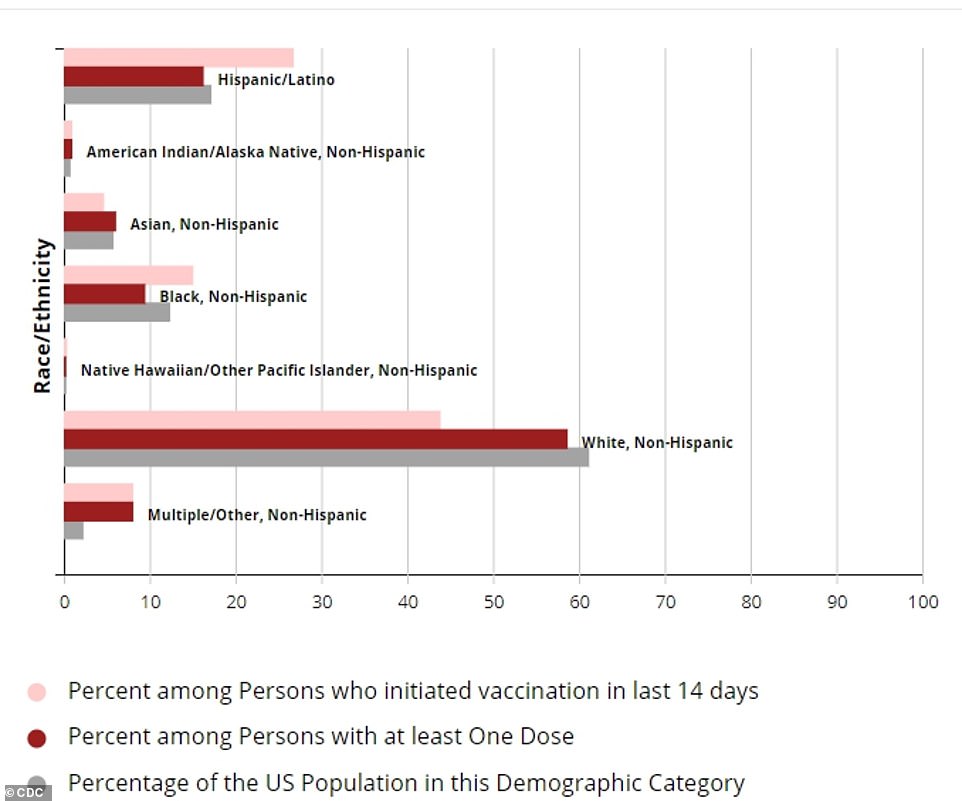
White and black Americans are falling behind in the vaccine rollout, while Asian Americans are the most vaccinated group
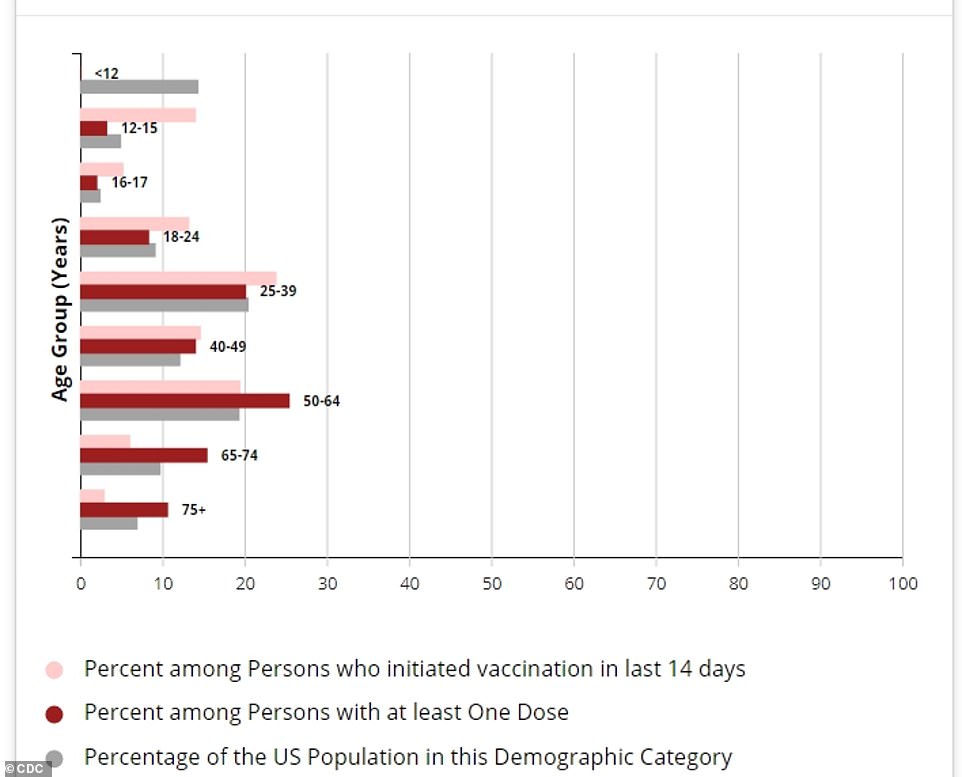
Younger people are less likely to have received the vaccine than older Americans. Many young people either do not fear the virus or do fear the vaccine
Americans under the age of 40 are not receiving the vaccine at the same rate as their older peers, with less than half of this age group receiving the shot.
Meanwhile, more than three-quarters of Americans above age 40 have received the shot.
The 18-24 age group, for example, accounts for 9.2 percent of the U.S. population, but only eight percent of the vaccinated population.
This group may be especially hard to convince, with a survey finding that 25 percent of unvaccinated people aged 18-25 have no intention of ever receiving the shots.
Young people who do not want to get vaccinated often either do not trust the vaccines or believe that since they are young and healthy, they are safe from the virus anyways.
This is a misconception, though, as COVID can cause harmful long-term conditions such as myocarditis and memory issues in survivors of any age.
Because every American under the age of 12 – 14.4 percent of the population – is unvaccinated – other age groups should have a higher vaccine share than population share.

Males are less likely to have received a COVID-19 vaccine than females so far
Americans aged 25 to 39 account for 20.2 percent of the vaccinated population and 20.5 percent of the total U.S. population.
For comparison, the most vaccinated age group are those aged 50 to 64 – who make up 25.5 percent of the vaccinated population despite only accounting for 19.4 percent of the U.S. population.
In total, only 49 percent of people aged 16 and 17, 53 percent of people aged 18 to 24 and 57 percent of people 25 through 39 have received at least one shot of a vaccine.
Numbers jump from there, with 66 percent of Americans aged 40 to 49, 76 percent aged 50 to 64, 92 percent aged 65 to 74 and 87 percent of Americans 75 and older being at least partially vaccinated.
The gender split in this county is about even – with women making up 50.8 percent of the population and men making up 49.2 percent.
Women make up 52.8 percent of the vaccinated population, compared to 47.2 percent of men.
In total, 59.4 percent of women and 54.9 percent of men have received at least one shot of the vaccine.
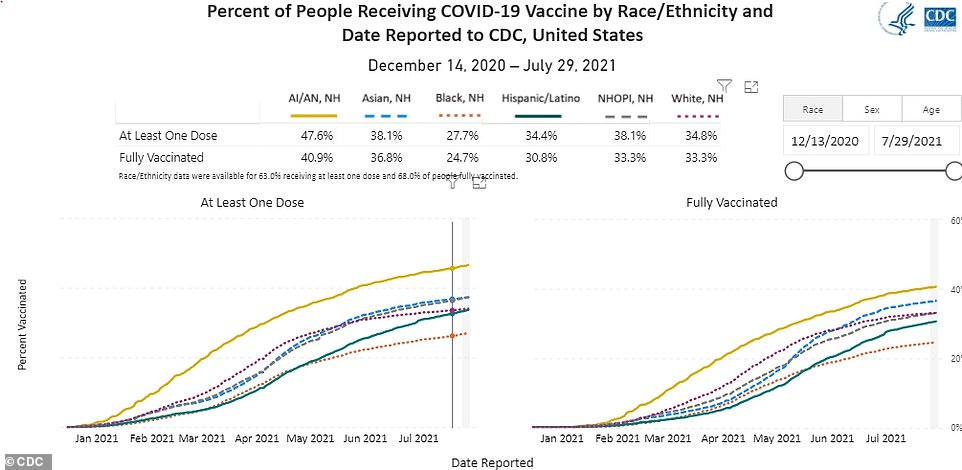
White and black Americans are least likely to have been vaccinated so far, according to CDC data
Despite a racial gap who was receiving the vaccine early on in the rollout, the shots now seem to be distributed more equitably this late into the rollout.
Just over a third of white Americans, or 34 percent having received at least one shot of the vaccine.,
Comparatively, black Americans are lagging, with only 27.7 percent received at least one shot so far.
Additionally, black Americans, where they have only received nine percent of total shots despite making up 12 percent of the population.
This may have less to do with vaccine hesitancy, though, and more to do with vaccine access.
Some primarily African American counties do not have the resources or staff to distribute the vaccine as easily as they can in other communities.
There has been an effort to close the gap, with even some in the private sector like Amazon opening clinics in cities like Los Angeles and New York to close the vaccine gap.
Meanwhile, white Americans account for 59 percent of the vaccinated despite making up 61 percent of the population.
Asian Americans are overrepresented in vaccination, making up 17 percent of those vaccinated despite only being 16 percent of the population
In total, 47.6 percent of Asians have received at least one vaccine dose.

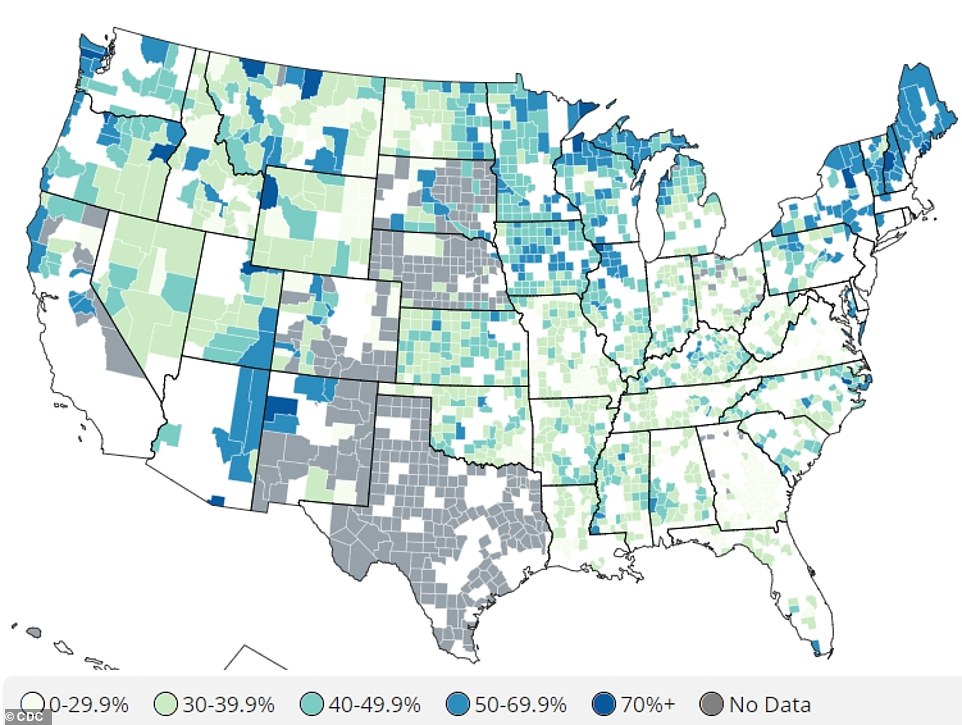
Urban areas have relatively high vaccination rates across the country (shaded above) while rural areas (shaded below) are falling behind their urban peers with barriers like a lack of access to information and a lack of transportation playing a role
Many rural areas also have lower vaccination rates than their urban peers, though the reason may not only be based in vaccine hesitancy.
Official data shows that 45 percent of people in urban areas have received at least one shot of a vaccine, compared to only 39 percent of people who live in rural areas, according to CDC data.
Rural Americans often have to travel further than their urban counterparts to receive the vaccine, and access to vaccine information is harder in areas that may not have full internet access.
There have been efforts to close the gap, though, with the U.S. Department of Health and Human Service dedicating $100 million to increasing vaccine access in rural areas last week.
President Joe Biden also announced that his administration will support door-to-door vaccine campaigns across the country, to bring the vaccine to people’s homes and allow them to get vaccinated without needing to travel.
Door-to-door efforts have already kicked off in some parts of the country, including in rural Georgia.
In total, nearly 350 million COVID-19 vaccine doses have been administered in the United States.
Almost half of the American population is fully vaccinated, and 57 percent are at least partially vaccinated.
Experts project that it may require the nation reaching 80 percent of the population getting fully vaccinated to reach herd immunity.
Provincetown: How July 4 weekend turned the partygoing playground of New England into the center of a Covid cluster
Located near the northern-most point of Cape Cod, Provincetown – or P-Town – is known for its beaches, artists and as a popular vacation spot for the LGBT+ community.
It has a population of just under 3,000 people year-round, but this raises to as high as 60,000 in the summer months.
Young party-goers descend on the town to make the most of the plethora of bars and clubs found along it’s famous Commercial Street.
Wealthy tourists usually found in nearby cities such a Boston and Manhattan will often use the town as their playground to spend their hard earned cash – or that of their parent’s.
But a week after crowds descended to celebrate the Fourth of July — the holiday President Joe Biden hoped would mark the nation’s liberation from COVID-19 — the manager of the Cape Cod beach town said he was aware of ‘a handful of covid cases among folks who spent time there’
Within weeks, the outbreak rapidly grew until, as of Thursday, 882 people were tied to an outbreak in the town, with 74 per cent of those having had both doses of the vaccine. It was reported that seven people were hospitalised, ABC News reported.
Before this, health officials were assuming that it was rare for a vaccinated person to become infected with the virus and, if they were, they probably wouldn’t infect others.
The assumption was based on studies of an earlier virus, and not the new Delta variant, which was first detected in India earlier this year.
It is indicated that this outbreak is among the new evidence behind the decision to make masks compulsory indoors again, even if they have had both doses of the vaccine.
The owner of Marine Specialties, a long running Army-Navy store, had been leery of officials dropping virus safety mandates ahead of what many expected would be a busy summer season. He even tried to require customers to mask up in his store through the summer, before finally relenting in June.
‘If we’d stuck with masks all along, I don’t think we’d be having this conversation,’ Patrick said, adding that he’s required all his staff to be masked and vaccinated. ‘They’re not entirely fun, but we wore them all last summer, and we didn’t have a single case in Provincetown. Now see where we’re at.’
Advertisement 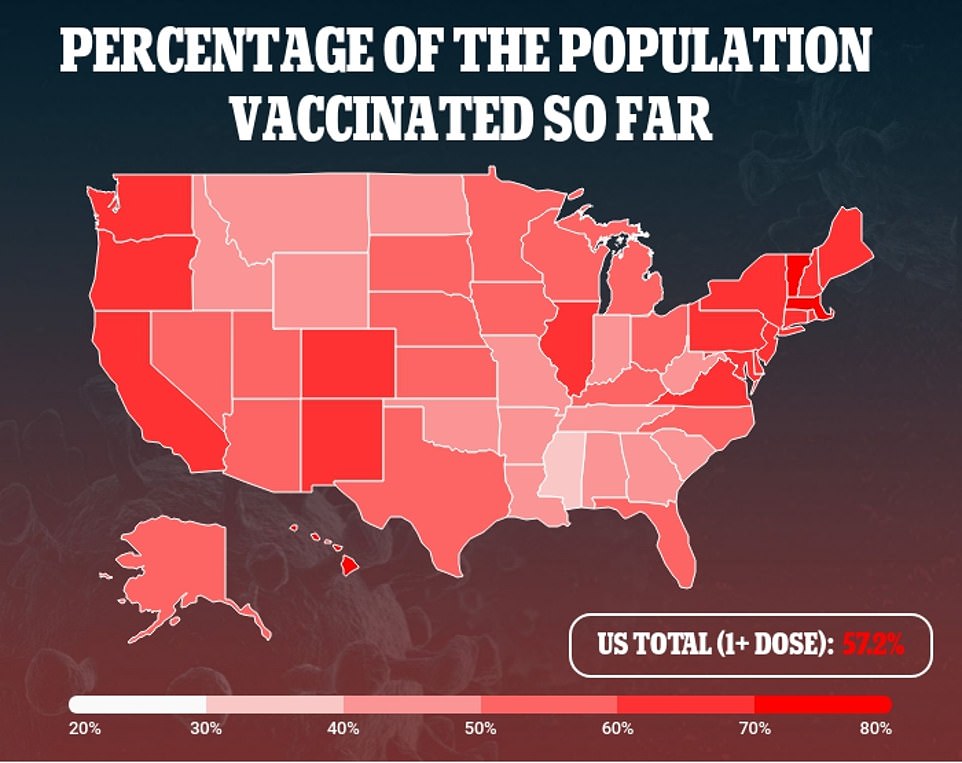
Source link : https://www.dailymail.co.uk/health/article-9844149/Unvaccinated-Americans-likely-young-male-black-rural-area.html











